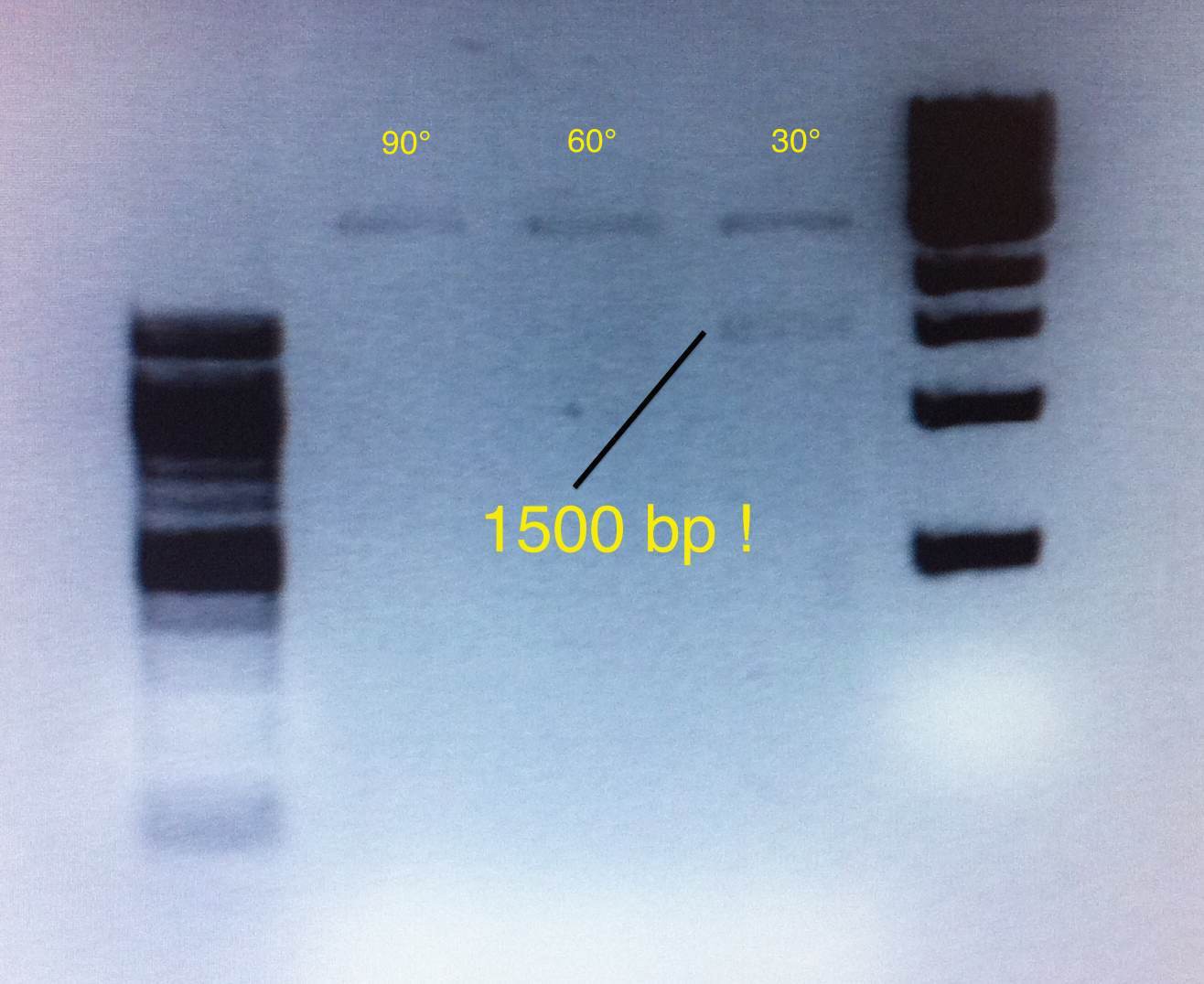Well, I had a theory that by tilting the orientation of the plane of the heating elements, I could adjust the flow rate. How would that work? Well, the convection current is caused by the different densities in the PCR reaction mixture at different temperatures. When the system is aligned vertically, there is the largest gravitational potential energy for driving the fluid flow. When the entire PCR tube setup is tilted, the vertical distance between the hotter and cooler fluids is reduced, so there is less drive pushing the fluid flow.
Testing the theory, I tried amplifying a 1500 base pair sequence at three different angles, 90°, 60° and 30°. I have never had successful PCR reactions over 700 base pairs yet, and I haven't read of any successful reaction on any other convection-based machines either.
The PCR Machine was carefully adjusted to the correct angle using the complex apparatus shown in the picture below :)
Here is the Gel image of my three reactions:

The top band in all three samples, at about 4500 base pairs, is the template DNA. But in the third PCR, tilted to 30° off horizontal, I have the right PCR product band! I'm incredibly excited, because it this means this isn't just a PCR machine for classrooms to demonstrate PCR anymore. When you can amplify products this size, you really have a great general purpose laboratory PCR machine that you can do real work on.
That's not to say the earlier version wasn't useful. Diagnosing HIV, or doing DNA barcoding is possible with a machine that can only synthesis 700 base pair long products, but this new result open many many more possibilities.
The next step with be to add a third heating element along the open side of the tube, to control the annealing temperature accurately. I will also have to add a mechanism that allows you to tilt the PCR heater easily, and maybe add dial-like markings to set the PCR length (i.e. 45° for a 1000bp long sequence). I might also replace the analog temperature sensors with I2C digital sensors, as this eliminates calibration issues with both the sensor itself and the ADC on the Arduino and only adds about 10 cents to the price of each heating element (when you buy hundreds or thousands).
The project is moving along really well now, so please take the time to vote for the Polymerase Chain Reactor if you like it!
 David
David
Discussions
Become a Hackaday.io Member
Create an account to leave a comment. Already have an account? Log In.